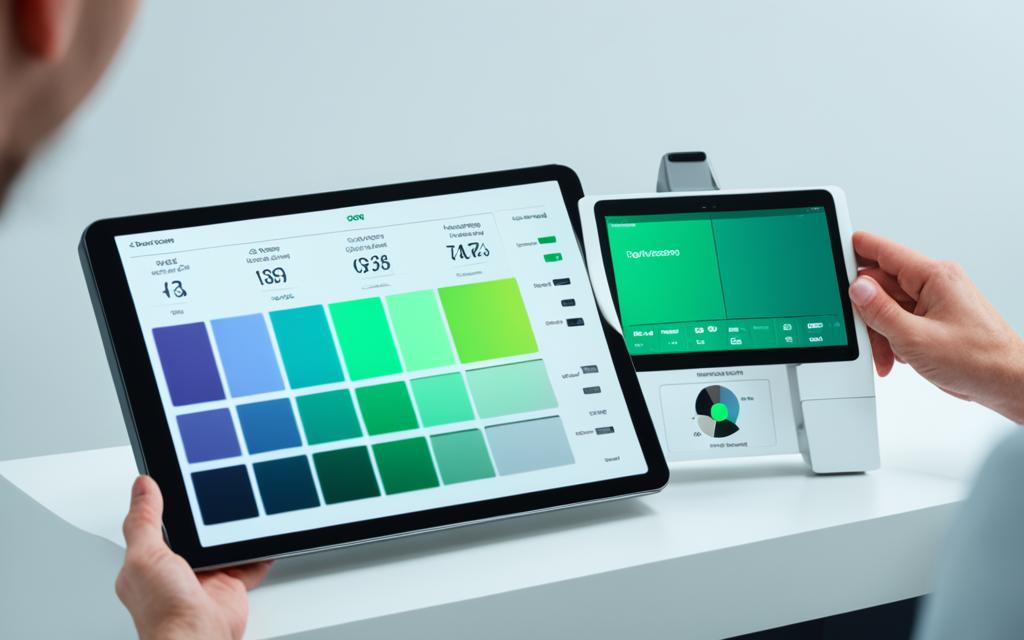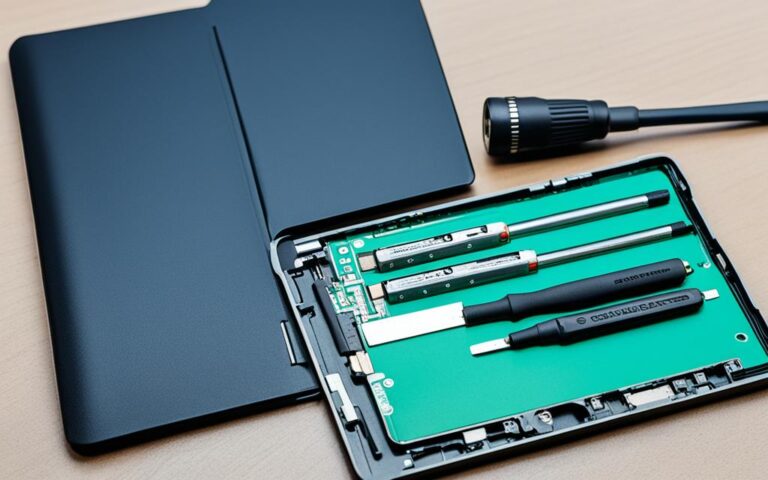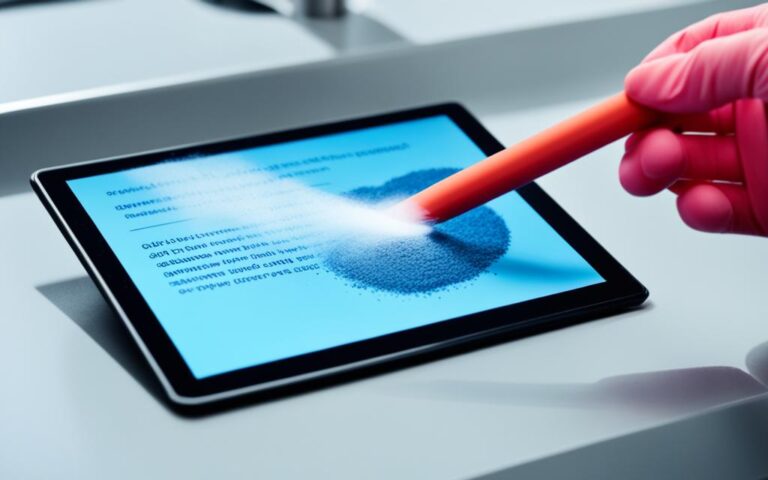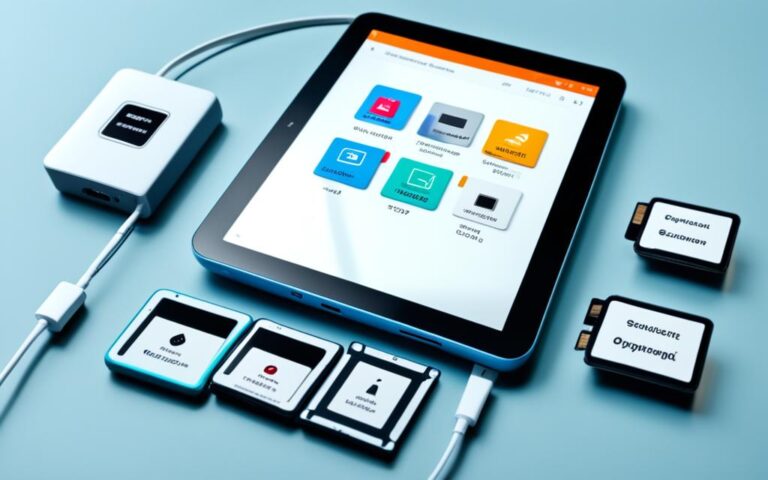Tablet Color Accuracy Issues for Professionals
Tablet colour accuracy is a crucial consideration for professionals working in fields such as graphic design, photography, and video editing. The accurate representation of colours is essential for maintaining the integrity and vibrancy of their digital artwork. However, professionals often encounter issues with tablet colour accuracy, which can significantly impact their work.
Colour accuracy issues on tablets can manifest in various forms, such as discoloration, inaccurate representation of colours, and shifts in colour tones. These issues can arise due to a range of factors, including monitor discoloration, graphics card issues, outdated drivers, electromagnetic interference, hardware problems, and colour profile mismatches.
Fortunately, there are solutions available to address tablet colour accuracy issues. Professionals can calibrate their monitors using built-in tools or online calibration utilities. Adjusting display colour settings, such as brightness, contrast, and gamma, can also help rectify colour imbalances. Keeping graphics drivers and software up to date is crucial for compatibility with colour standards. Regular maintenance of graphics cards, including proper cooling and driver troubleshooting, can prevent colour anomalies. Additionally, adjusting colour profiles to ensure accurate colour representation is important.
In professional workflows, the Reference Mode plays a vital role. This display mode is specifically designed for content creation tasks like colour grading and editing. By matching the requirements of various colour standards and video formats, Reference Mode ensures accurate colours and consistent image quality. It targets a D65 white point and disables dynamic display adjustments like True Tone, Auto-Brightness, and Night Shift.
By addressing tablet colour accuracy issues through professional calibration methods and utilizing Reference Mode for workflows, professionals can create vibrant and precise digital artwork, maintaining the integrity of their work.
Common Causes of Tablet Color Accuracy Issues
Tablet color accuracy can be impacted by various factors, resulting in issues such as monitor discoloration, inaccurate color representation, and color shifts. Understanding the common causes of these problems can help professionals like graphic designers and photographers diagnose and resolve color accuracy issues effectively.
Monitor Discoloration
Monitor discoloration is a common cause of color accuracy issues on tablets. It can occur due to graphics card issues, outdated drivers, or improper color settings. Discoloration may manifest as a tint or hue that affects the overall color representation on the tablet’s display.
Electromagnetic Interference
Electromagnetic interference from nearby devices or cables can also impact tablet color accuracy. Interference can disrupt the signals between the tablet and its display, leading to color anomalies. Ensuring proper shielding and positioning of cables can help minimize electromagnetic interference and improve color representation.
Hardware Problems
Hardware problems, such as damaged cables or failing graphics processing units (GPUs), can contribute to color inaccuracies on tablets. Faulty cables may not transmit color signals correctly, while failing GPUs may struggle to render colors accurately. Regular maintenance and proper handling of hardware can mitigate these issues.
Color Profile Mismatch
Mismatched or corrupted color profiles can also lead to color inaccuracies on tablets. Color profiles define how devices interpret and display colors. If the tablet’s color profile is not aligned with the content being viewed or the device it is connected to, color accuracy can be compromised. Verifying and adjusting color profiles can help ensure accurate color representation.
“Tablet color accuracy issues can stem from various factors, including monitor discoloration, electromagnetic interference, and hardware problems.”
Solutions for Tablet Color Accuracy Issues
Tablet color accuracy issues can be addressed through various solutions that ensure accurate and vibrant color representation. By implementing these solutions, professionals can maintain the integrity of their digital artwork and enhance their overall productivity. The following are some effective approaches to tackle tablet color accuracy issues:
1. Monitor Calibration
To achieve precise color reproduction, professionals can calibrate their monitors using built-in tools or online calibration utilities. This process adjusts the display settings to match industry standards, resulting in accurate and consistent color representation across different devices and applications.
2. Display Color Settings Adjustment
Adjusting display color settings such as brightness, contrast, and gamma can help rectify color imbalances. By fine-tuning these settings, professionals can ensure that colors are accurately showcased on their tablets, thus maintaining the fidelity of their digital artwork.
3. Software Updates
Keeping graphics drivers and software up to date is crucial for compatibility with color standards. Manufacturers often release software updates that address color-related issues and improve overall performance. By regularly updating their software, professionals can benefit from enhanced color accuracy and stability.
4. Graphics Card Maintenance
Regular maintenance of graphics cards is essential to prevent color anomalies. Professionals should ensure proper cooling to avoid overheating, which can affect color reproduction. Additionally, troubleshooting graphics drivers and addressing any hardware issues promptly can help maintain optimal color accuracy.
5. Color Profile Adjustment
Adjusting color profiles is another important step in addressing tablet color accuracy issues. Professionals can use color management tools to create or modify color profiles that align with their specific requirements. By meticulously adjusting color profiles, accurate color representation can be achieved, resulting in precise and visually appealing digital artwork.
Implementing these solutions can significantly improve tablet color accuracy, allowing professionals to create vibrant and accurate digital artwork. By ensuring proper monitor calibration, adjusting display color settings, keeping software up to date, maintaining graphics cards, and fine-tuning color profiles, professionals can unlock the full potential of their tablets and enhance their creative output.
Importance of Reference Mode for Professional Workflows
Reference Mode plays a crucial role in ensuring accurate color representation and consistent image quality for professionals engaged in content creation workflows such as color grading and editing. It is specifically designed to meet the color requirements of various color standards and video formats, enabling professionals to achieve the desired results in their work. By targeting a D65 white point and disabling dynamic display adjustments, Reference Mode provides professionals with the confidence that their colors are accurately displayed on their tablets.
When it comes to color grading, professionals rely on Reference Mode to accurately visualize and manipulate colors in their video projects. Whether they are working on films, television shows, or commercials, Reference Mode ensures that the colors they manipulate will be reproduced accurately across different displays and platforms. This is particularly important as viewers increasingly consume content on a wide range of devices with varying color capabilities.
Similarly, Reference Mode is essential for content creators engaged in graphic design, photography, and other visual arts. It allows them to work with precise color representation, ensuring that their designs and photographs look as intended when displayed on different screens or in print. Without Reference Mode, variations in color accuracy and representation could compromise the final output and the designer’s or photographer’s artistic vision.
In addition to color accuracy, Reference Mode also helps maintain consistent image quality. By standardizing the display’s color reproduction, professionals can rely on their tablets to accurately represent details, shadows, highlights, and other visual elements. This is crucial in critical tasks such as retouching photographs, editing videos, or creating digital artworks, where attention to detail is paramount.
“Reference Mode allows professionals to work with confidence, knowing that their colors are being displayed accurately on their tablets.”
Overall, Reference Mode is an indispensable feature for professionals in content creation workflows. Its ability to ensure accurate colors, match color standards, target a D65 white point, and disable dynamic display adjustments makes it an invaluable tool for professionals engaged in color grading, graphic design, photography, and other creative endeavors. By utilizing Reference Mode, professionals can have peace of mind knowing that their artistic vision is faithfully represented in their work.
Conclusion
Tablet color accuracy is crucial for professionals in creative industries to produce high-quality digital artwork. Fortunately, there are effective solutions to address color accuracy issues and ensure that tablets display colors accurately and consistently.
One of the key solutions is monitor calibration. By calibrating the tablet’s display using built-in tools or online calibration utilities, professionals can achieve accurate color representation. Adjusting display color settings, such as brightness, contrast, and gamma, can also help rectify color imbalances and enhance color accuracy.
Keeping software and drivers up to date is vital for maintaining color accuracy on tablets. Regular updates ensure compatibility with color standards and prevent color anomalies. Additionally, professionals can benefit from using Reference Mode for their workflows, as it guarantees accurate colors and consistent image quality.
By addressing tablet color accuracy issues through solutions like monitor calibration, adjusting display color settings, and utilizing reference modes, professionals can create vibrant and precise digital artwork that truly represents their creative vision. Professional color calibration offers numerous benefits, allowing artists to maintain the integrity of their work and meet the high standards of their industries.












